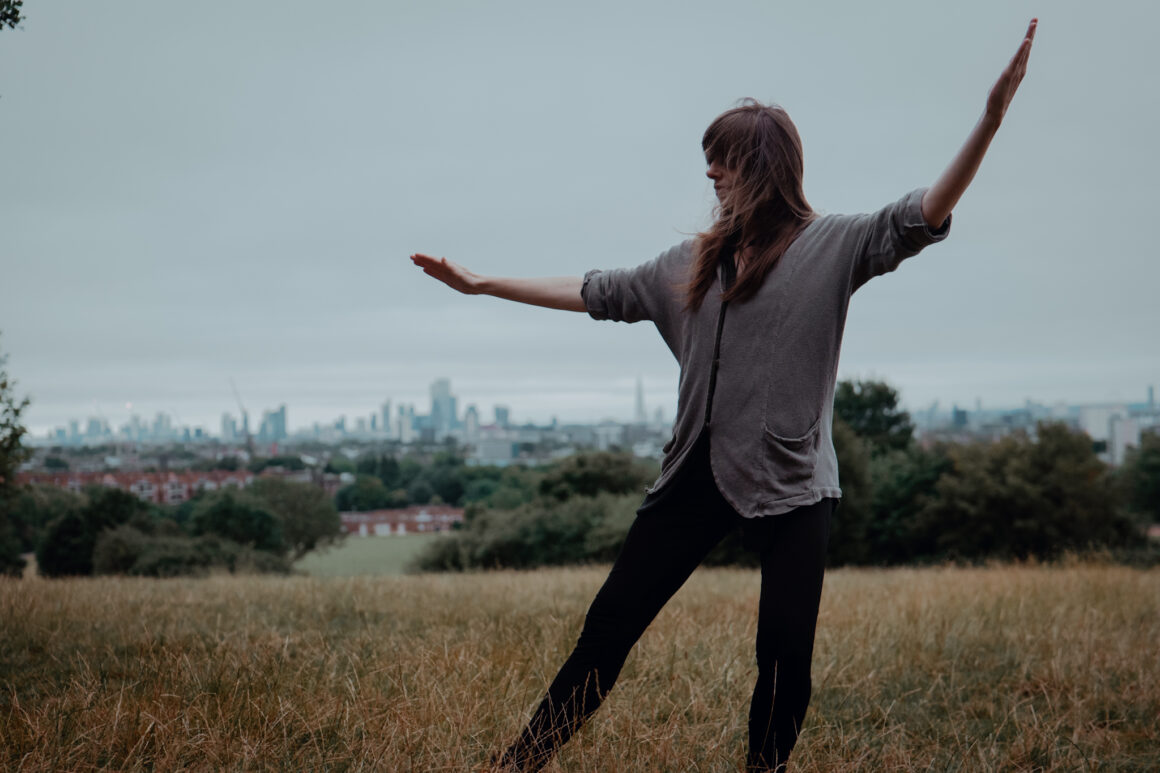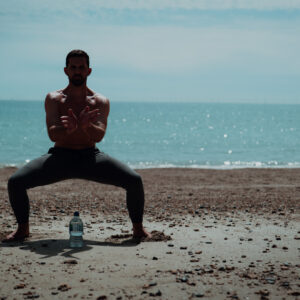Tai chi neigong (internal strength training) is an extremely unique set of exercises, breathing patterns and meditation, which to the untrained eye can be difficult to understand.
The unusual movements, stances and postures all have highly specific purposes, which when we understand them we can apply with greater focus and intention to our practice.
I’ve recently been fortunate to receive a copy of the training plan given to neigong students by Cheng Tin Hung. It details the traditional practice schedule for best results and also provides a clear outline of the primary benefits of each exercise. There are also other benefits for each of the exercises but the primary ones should guide and inform your training intent.
Practice the Yin sequence (and Old man burning the cinnabar) on Monday, Wednesday, Friday and Sunday. Practice the Yang sequence Tuesday, Thursday and Saturday.
Tai Chi Neigong Yin Sequence
The Golden Tortoise
Beginner level: 1min both sides
Intermediate level: 5min both sides
Advanced level: 10min both sides
This exercise has 2 parts to it and is a static position, meaning the beginner level would take 2 minutes in total. Most people find even the beginner times very difficult to do and have to half it when they begin.
Traditional purpose: To make the entire body firm and tough.
The exercise conditions and toughens the whole body and the way the position is makes upper body respiration difficult, thus encouraging abdominal breathing.
Embracing The One
Beginner level: 2 minutes
Intermediate level: 5 minutes
Advanced level: 10 minutes
This exercise is a standing posture held for the times listed above with the eyes closed and the tongue rested on the roof of the mouth. Embracing the one is a training methodology used by taoists on their quest for enlightenment. Look up John Blofeld’s excellent ‘Taoism – The quest for immortality’ for specifics.
Traditional purpose: To strengthen the arms
This posture strengthens the arms whilst a rooted position is maintained. The arm geometry and positioning provide a functional ‘specificity’, making the strength acquired highly useful in practical application. Shoulder height is the traditional guideline for positioning.
Holding the Golden Plate
Beginner level: 2 minutes
Intermediate level: 5 minutes
Advanced level: 10 minutes
This is another standing posture held for the times listed above. According to one source the posture comes from ancient times when servants would be required to hold a giant tray for the emperors and lords.
Traditional purpose: Strengthen the wrists
Many people don’t flex the wrist enough in the posture to provide the necessary stimulation to improve its condition and strength. A strong wrist is essential for delivery of many types of Tai Chi self defence techniques.
Jade rabbit facing the moon
Beginner level: 41 repetitions
Intermediate level: 111 repetitions
Advanced level: 333 repetitions
Traditional purpose: Training to sink the Qi to the Dantien
In the tai chi classics they advise people to make the Qi sink to the Dantien. The Dantien (the lower of 3 Dantien’s actually) is essentially the lower abdomen. So what this exercise is training you to do is be able to breath extremely deeply, drawing the breath (Qi) to the lowest parts of the abdomen. The highly specific hand movements and patterns are designed to facilitate this. No focus on the breath is required and with regular practice you will become an abdominal breather, which brings many health and martial benefits.
Red capped crane stretching its feet
Beginner level: 41 repetitions
Intermediate level: 111 repetitions
Advanced level: 333 repetitions
Traditional purpose: To loosen and stretch the lungs.
The lungs are responsible for bringing Qi (breath) into the body, which is essential for the wellbeing of the entire human organism. So in the internal strength system a lot of emphasis has been placed on making the breathing apparatus strong, flexible and efficient in order to maximise our capacity for optimal, healthy breathing. This exercises gently sat reaches and loosens the lungs through repetition of specialised movements.
Civet (spiritual/alert) cat catching rats
Beginner level: 41 repetitions
Intermediate level: 111 repetitions
Advanced level: 333 repetitions
Traditional purpose: To train light, agile application of spiralling and squeezing power
This technical exercise trains the general skill of spiralling force, one of the eight traditional tai chi fundamental ‘Jin’s’ which are simply skilful application of force. This style of spiralling force is the type applied in striking or pushing an opponent. Within this exercise is the expression of ‘squeezing’ power known as ‘Tsai’. This is also one of the eight traditional Tai Chi Jin’s. It required the use of explosive wrist extension at the moment of impact. Both of these forces are an essential part of this style of tai chi’s martial effectiveness and regular practice of the exercise cultivates your skill and commits the movements into your muscle memory, ready to be applied when the time is right. The movement should be light and agile, free of strain or tension.
Flick the whip
Beginner level: 111 repetitions
Intermediate level: 333 repetitions
Advanced level: 1001 repetitions
Traditional purpose: To increase the power in the hands
This exercise is a ballistic movement where all the power is expressed like the whip of a towel, into the hands. With practice we gain the ability to be able to express whole body force precisely into the hands, giving us ‘heavy hands’. The means that in self defence your ability to hit with maximal power will be increased. Full usage of the waist is important in this practice.
White Ape pushing out his paws
Beginner level: 41 repetitions
Intermediate level: 111 repetitions
Advanced level: 333 repetitions
Traditional purpose: To strengthen the use of the palms
In Tai Chi we use the palm a lot in pushing hands and self defence practice, for either pushing or striking. This exercise trains you to express your pushes or strikes in conjunction with a 45 degree turn of the waist, as well as gravity. You should feel gravity playing a significant role in achieving stability and adding to the power generated. Smoothness is important, as is feeling the elastic coiling as you twist in the rotations.
Swallow piercing the clouds
Beginner level: 111 repetitions
Intermediate level: 333 repetitions
Advanced level: 1001 repetitions
Traditional purpose: Escape grips (and grabs)
This exercises makes it second nature for you to easily escape grips and grabs by the use of rotational waist movement and spiralling arm movements.
Leading the goat smoothly
Beginner level: 111 repetitions
Intermediate level: 333 repetitions
Advanced level: 1001 repetitions
Traditional purpose: Opportunistic capturing and application of large spiralling force
The application of this type of force is extremely effective in self defence and can be done destructively on the head and neck or somewhat more gently to the body. Again is training the use of one of the traditional foundation Tai Chi ‘Jin’, although in a different way to exercise 5.
The Giant Python turns over its body
Beginner level: 41 repetitions
Intermediate level: 111 repetitions
Advanced level: 333 repetitions
Traditional purpose: To strengthen the kidneys and heart
In Daoist medicine all the organs are linked in various ways, with some considered upstream or downstream from the others in terms of their functioning and impact. The kidneys are considered upstream from the heart, and by benefiting their health and development we can positively affect the heart. This exercise stimulates the health and functioning of our kidneys through specific twisting and turning and use of the arms.
The Elephant shakes his head
Beginner level: 111 repetitions
Intermediate level: 333 repeptitions
Advanced level: 1001 repetitions
Traditional purpose: Release tension from the body
The exercise is designed to help you relax your entire body and make it very soft and loose. You’ll not only feel really good as a result but it’ll help you become considerably more relaxed generally. It will also improve your martial skills because looseness is a prerequisite for high quality movement and expression of power. Really focus on releasing tension as you practice.
Tai Chi Neigong Yang Forms
Interestingly the Yang internal strength exercises are all practiced with a degree of tension, which can be calibrated by you to stimulate the best movement quality and strength gains. The idea is that as well as building strength and power in all kinds of ways, this tension also enhances body awareness and also creates stronger ‘form’ to balance the ‘formlessness’ of the Yin exercises. So in addition to the befits listed below a great deal of general strength is developed through the Yang exercises.
Tiger Paw
Beginner level: 41 repetitions
Intermediate level: 111 repetitions
Advanced level: 333 repetitions
Traditional purpose: To strengthen ‘Tsai’ power (squeeze)
As discussed above, Tsai is one of the important foundational ‘Jin’ in Tai Chi. This style of trained force is a kind of whole body squeeze expressed through the hands via skilful wrist extension. The tiger paw exercise actually trains 2 expressions of the force for each full repetition of the exercise, so of practicing at the intermediate level you would have practiced the skill 222 times in a single practice.
Golden dragon coiled around a pillar
Beginner level: 41 repetitions
Intermediate level: 111 repetitions
Advanced level: 333 repetitions
Traditional purpose: To strengthen the legs, stance and develop the waist
This tough exercise develops exceptional leg strength and rooting capability, in conjunction with stretching the waist.
White Horse raises/pounds its hooves
Beginner level: 41 repetitions
Intermediate level: 111 repetitions
Advanced level: 333 repetitions
Traditional purpose: Training downwards force (On/An)
One of the traditional 8 Tai Chi forces is On/An (Cantonese/Mandarin) which is downwards directed force. This exercise trains its use to the front and rear, in conjunction with some spiralling motion for added torque. Tension helps to mimic the resistance one would encounter when applying the type of force to an opponent.
Plant the Fence
Beginner level: 2 Minutes
Intermediate level: 5 Minutes
Advanced level: 15 Minutes
Traditional purpose: To greatly strengthen the ‘bridge’
In Tai Chi the bridge can be your guard or the frame used in grappling between you and an opponent. This exercise is a method par excellence for strengthening the bridge to extreme levels, primarily through connective tissue development. There are 4 positions strengthened making it an excellent all round strength builder, with tremendous practical application. Tension is maintained throughout the holding of the 4 postures, which at the intermediate level would require you to be in stance and under tension for 20 minutes total for this single exercise.
Wu Gang cutting laurels
Beginner level: 111 repetitions
Intermediate level: 333 repetitions
Advanced level: 1001 repetitions
Traditional purpose: To train power expression via the waist
In the Tai Chi classics a lot of emphasis is placed on developing power from the ground up, expressing it and amplifying it via the waist. This exercise is specifically designed to train the expression of whole body, ballistic power via the waist. At the end of the movement a forceful tightening of the body helps to fully transmit the power created onto an opponent (which would be via a striking or grappling technique). Developing skill at momentarily hardening the body and then softening immediately after is highly useful for Tai chi martial artists.
Rhinoceros facing the moon
Beginner level: 2 minutes
Intermediate level: 5 minutes
Advanced level: 15 minutes
Traditional purpose: To strengthen the kidneys
Again in traditional Daoist (and TCM) medicine a lot of emphasis is placed on the health and power of the kidneys. This posture is held in a highly specialised position, designed to squeeze and stimulate the kidneys, thus improve their health and functioning.
Reclining tiger stretching his waist
Beginner level:111 repetitions
Intermediate level: 333 repetitions
Advanced level: 1001 repetitions
Traditional purpose: Strengthen the lower back/backbone
This exercise strengthens the lower back through its inclined posture and repetition of waist rotations combined with extended arm positions. It’s also a highly efficient way to develop uprooting power, another of the 8 traditional forces in Tai Chi. Again skilful use of tension and relaxation are important.
Tiger (Mountain Monarch) coming out from cave
Beginner level: 1 minute
Intermediate level: 2 minutes
Advanced level: 5 minutes
Traditional purpose: Strengthening the stance
This tough exercise is designed to strengthen and condition the legs and stance via the use of a one legged standing posture.
Oarsman rowing the boat (Chinese style standing boat)
Beginner level: 41 repetitions
Intermediate level: 111 repetitions
Advanced level: 333 repetitions
Traditional purpose: Weight shifting and balance
In Tai Chi we often apply techniques using power that’s shifted from one leg to the other. For that to happen optimally we must maintain root, balance and structure. this exercise is designed to specifically train you to apply shifting force for while shifting from back to front and vice versa using left and right sided stances. Again skilful tension is utilised in conjunction with some subtle ‘fa Jin’ – explosive application of trained force.
Hungry eagle looking for food
Beginner level: 5 minutes
Intermediate level: 15 minutes
Advanced level: 30 minutes
Traditional purpose: Strengthen the arms
This is another tough exercise, which will develop considerable arm strength. It appears that when ‘arm strength’ is used as the purpose directive, it also points to the areas of the body that support the arms too. This exercise will improve the connective tissue strength of the arms and also the shoulder girdle.
Macaque monkey leaping through trees
Beginner level: 41 repetitions
Intermediate level: 111 repetitions
Advanced level: 333 repetitions
Traditional purpose: Strengthen leg Jin (skilful power)
This exercise is performed in a way that develops lower body flexibility and that will develop strong connective tissues as well as conditioning the leg muscles. Balance and control during the exercise contribute to the development of skilful expression of power using the legs. The exercise is said to resemble a monkey leaping from one branch to the next, trying to catch a branch on the next tree. This is a nice visual cue to emphasis the explore expression of the ‘Jin’ in conjunction with the forwards expression of the arms.
The Old Man burning the cinnabar (making the medicine)
Traditional purpose: Nurture your spiritual wellbeing
This exercise is a meditation and breathing practicing which is performed at the end of the neigong practice, or to be used at other times when deep relaxation is sought. Before bed is an ideal time too, and sleep quality is much improved as a result.
There is no set time for any of the 3 parts of this exercise and should be done as much as you like, with an emphasis on simply enjoying them and relaxing.
The first two elements are breath awareness exercises which can be done seated or standing, with your awareness gently focussed on your breath, matching it with specific arm movements in time with the breath. Movements always follow the breath. The second exercise features a unique leaning aspect, using the ankle joint only, which is designed to stimulate acupressure points on the feet – which some people believe stimulate the vagus nerve, which helps activate the parasympathetic nervous system.
The final movement features a lotus flower meditation practice.
The Taoists believed that good internal alchemy (spiritual development focused practices) was a bit like a hen sitting on her eggs. With enough time and dedication the eggs would be ready and hatch of their own accord. This final practice can be likened to that process. At the end of hard physical and technical training we can spend time relaxing deeply, breathing optimally and transmuting good energies developed into a highly potentiated and positive frame of mind.
As you can see the internal strength exercises are a very systematic and comprehensive daily practice, which develop technique, strength, power and endurance. They were designed to improve the functioning of the body, internally and externally and to develop hard and soft movement expressions. All this is tremendously useful for building up our physical health, vitality and martial prowess, as well as our general sense of wellbeing. The final exercise provides us with the meditative tools to take this a step further into deeper states of relaxation, purpose and tranquility.
-
Product on saleThe complete Tai Chi Neigong course 2025 EditionOriginal price was: £490.00.£333.00Current price is: £333.00.











